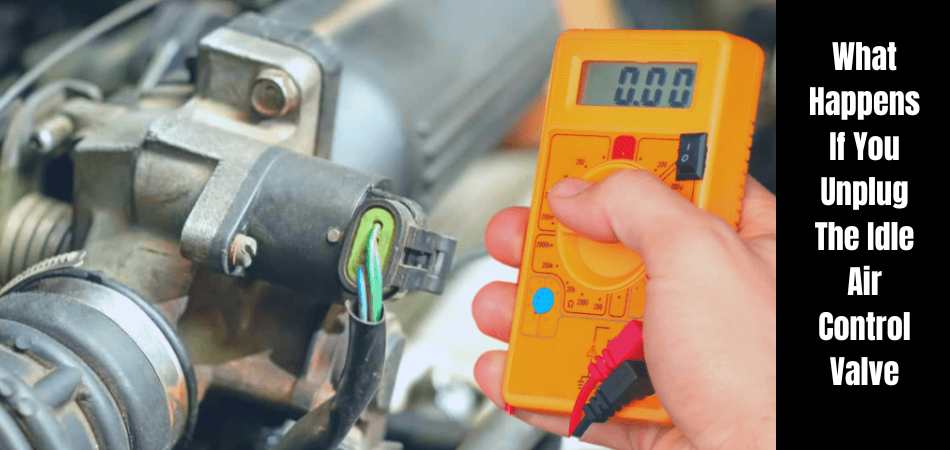
What Happens If You Unplug The Idle Air Control Valve? If the shaking car engine didn’t come with an oddly diffusing sound, driving at a stoplight would be alarming to any driver. Having a hard start at home or in the park is a regular occurrence. Every driver will inevitably experience hard starting at some point in their lives.
Idle air control valve (IACV) malfunctions when intermittent idling is accompanied by abnormally fluctuating idle speeds or the engine racing for its life.
People who don’t grease may not know the culprit yet if they don’t understand what is happening. The IACV wires might be unplugged by drivers who dare to look under the hood.
In these situations, many car owners unplugged their Idle Air Control Valves and drove their cars for a short period without experiencing fluctuating idle speeds.
How does your engine react if you unplug this component? Can you drive a car safely? Did it solve the problem? Does it pose a threat to more serious issues?
What do you think? Let’s take at look at What Happens If You Unplug The Idle Air Control Valve.
What is an Idle Air Control Valve?
If you are unfamiliar with automotive mechanics, diving into your vehicle’s intricate systems and components might seem intimidating.
Idle Air Control (IAC) Valve is the main topic at hand. In your engine’s complex layout, the IAC valve controls the engine’s idle speed. By regulating airflow around the closed throttle plate, this is achieved.
Basically, it keeps your vehicle’s engine running smoothly while you’re at a stoplight or stuck in traffic. The engine’s operation is adjusted based on the load, whether air conditioning, heaters, or headlights are on.
It is a compact, electrically controlled component near the intake manifold. By altering the position of the air passage and controlling idle speed, it adjusts the airflow. Based on engine temperature and electrical load, the car’s computer continuously regulates the IAC valve’s operation or the Engine Control Unit (ECU).
The IAC valve is, without a doubt, crucial to your vehicle’s overall performance and efficiency. Your car’s operation can be significantly affected by unplugging it, as you probably already know. How do these changes work? Those are the topics we’ll discuss in the next section.
How Does the Idle Air Control Valve Work?
The IACV bypasses the throttle plate when the engine is idling, allowing air into the engine. Adding extra air to the engine increases its speed and keeps it running smoothly. The IACV is controlled by a computer, which can adjust the air entering the engine. The engine may continue to run at a constant speed even when the load or temperature changes.
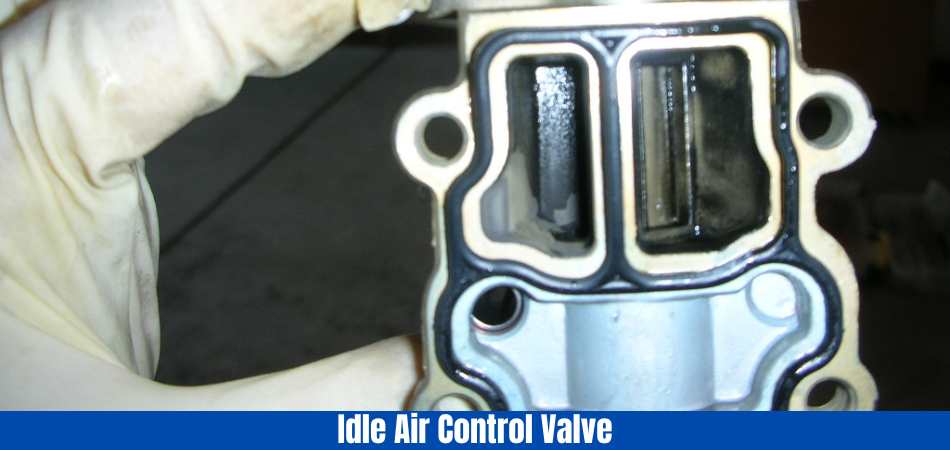
What Happens If You Unplug The Idle Air Control Valve?
A disconnected IAC valve can adversely affect your vehicle’s performance immediately and in the long term. As a general rule, it goes like this:
1. Idle speed altered
It regulates the engine’s idle speed as its primary function. Engine control units (ECUs) cannot control the idle speed when unplugged. In this case, the engine speed will fluctuate, resulting in an erratic idle.
2. Stalling of the engine
A lack of input from the IAC valve may prevent the ECU from compensating for additional loads like air conditioning or power steering. In particular, when idle or during low-speed maneuvers, this could result in the engine stalling.
3. Cold Start Difficulties
When starting the engine in cold weather, the IAC valve plays an important role. If you don’t have it, you might have trouble starting your car, and even when you do, you might have problems running it.
4. Fuel efficiency decreased
IAC valves regulate air-fuel mixtures at idle to achieve maximum fuel efficiency. This mixture can become imbalanced when unplugged, resulting in reduced fuel efficiency.
5. A potential engine damage
It can cause more severe damage to the engine over time if the IAC valve does not function properly. For example, frequent stalling can cause excessive wear on the starter motor.
Putting the vehicle’s performance and health at risk, unplugging the IAC valve forces the ECU to run the engine without all the necessary data. Next, we’ll examine some symptoms that may indicate your IAC valve is unplugged or malfunctioning.
What Are the Symptoms of a Bad or Unplugged Idle Air Control Valve?
IAC valve symptoms such as a bad or unplugged valve can save a life. Doing so lets you quickly identify and solve the issue before it escalates into a more serious one. You should be on the lookout for the following signs:
1. Idle speed error
Idle speed is most commonly affected by an unplugged IAC valve when it becomes unstable or erratic. It might be a sign that your IAC valve is malfunctioning or unplugged if your engine’s RPM fluctuates wildly when your vehicle is stationary.
2. Stalls frequently
It is also common for the engine to stall frequently, especially when it is under load. A vehicle may experience this when the air conditioning is running, the headlights are on, or when maneuvering at a low speed.
3. Start-up problems
If your vehicle is having trouble starting, especially in colder weather, an unplugged IAC valve may be to blame. The engine may eventually start, but it may run rough.
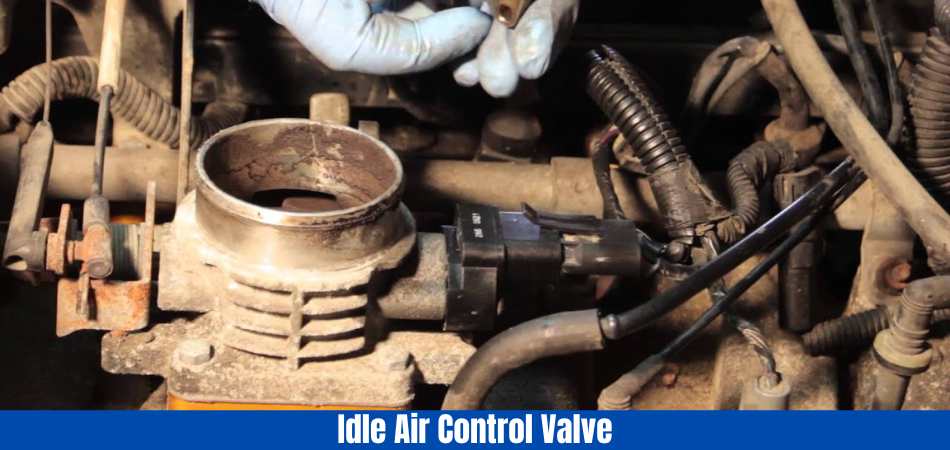
4. Engine Check Light
In modern vehicles, the engine’s performance and other components are monitored by systems. An unplugged or faulty IAC valve may cause your dashboard’s Check Engine Light to illuminate.
5. Fuel efficiency reduced
An unplugged IAC valve might be causing your vehicle to consume more fuel than usual. The IAC valve is an essential component of maintaining optimal fuel economy.
If you ever experience an IAC valve problem, you can take prompt action by knowing these symptoms.
What Should You Do if Your Idle Air Control Valve is Unplugged or Malfunctioning?
There is more to identifying a problem than just identifying it. Knowing how to address it is the next crucial step. The following steps should be followed if you suspect your IAC valve is unplugged or malfunctioning:
1. Check for symptoms
IAC valve symptoms should be confirmed as being caused by the valve. Symptoms in the previous section include an erratic idle speed, frequent stalling, difficulty starting the engine, and a lit Check Engine Light. It might be an IAC valve problem if you observe any or a combination of these symptoms.
2. Check the IAC valve.
Inspecting the IAC valve yourself is possible if you have basic mechanical skills and the right tools. Intake manifolds usually have this component.
Make sure it is plugged in and not damaged. The problem might not be evident to the naked eye, however.
3. Get professional advice
Consult a professional mechanic if you’re not confident in your mechanical skills or if the IAC valve appears plugged in and undamaged. An IAC valve diagnostic can be performed and confirmed if there is a problem.
4. Next Steps: Decide
If You need to determine whether to re-plug or replace the IAC valve if it is unplugged or faulty. If the valve is in good condition, replugging might resolve the issue. The valve must, however, be replaced if it is defective.
How To Reset Idle Air Control Valve – A Step-By-Step Guide
You must troubleshoot and check whether idle air control is causing these problems if your vehicle displays faulty IAC valve symptoms. To test if the IAC valve is working correctly, you can perform a quick test before resetting the valve.
The following steps will guide you through the IAC valve test:
Step 1
You want to hear clearly, so turn off the radio and the air conditioning.
Step 2
Next, follow these steps carefully to the car engine as it sits and idles.
Step 3
Make a note of the vehicle’s RPMs. A figure of no less than 600 and no more than 1000 should be considered.
Step 4
If the RPMs are low, there is likely to be a problem with the IAC valve or a vacuum leak in one of the vehicle’s systems.
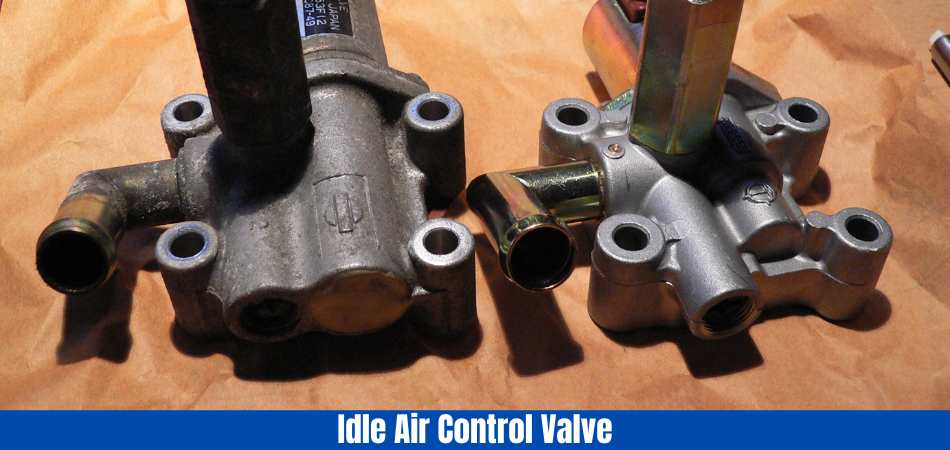
If you find that there is an issue with the IAC valve after testing it, you can try resetting it. While resetting the valve is not a permanent fix, it may be enough to keep your IAC working until it can be repaired or replaced.
Can Your Idle Air Control Valve Make Your Car Not Start?
If It’s possible that your car isn’t starting because of a few things. Your idle air control valve may be malfunctioning. By closing the throttle, the idle air control valve regulates the air entering the engine.
Maintaining smooth idling is achieved by doing this. It can be challenging to start an engine if the valve is stuck open, allowing too much air to enter. You may also have trouble starting your car if your idle air control valve is dirty or clogged.
If you suspect your idle air control valve may be causing starting problems, have it checked out by a mechanic as soon as possible. It won’t take them long to diagnose the problem and get your car back on the road.
What are the Preventive Measures to Avoid Issues with Your Idle Air Control Valve?
The IAC valve is a component that requires preventive maintenance, just like most other vehicle components. IAC valves can be extended by following a few simple practices to avoid unplugging or damaging them. You should consider the following preventive measures:
1. Maintaining your vehicle regularly
Maintaining your vehicle regularly is crucial to its overall health. Various components, including the IAC valve, are checked, including oil changes and filter replacements.
2. Maintain a clean throttle body.
A dirty throttle body can negatively affect the performance of the IAC valve located within or near the throttle body. IAC valves can be kept functioning correctly by cleaning the throttle body regularly.
3. Gentleness is key
In terms of size and sensitivity, the IAC valve is relatively small. Ensure you don’t knock it or its electrical connector loose if you work near it.
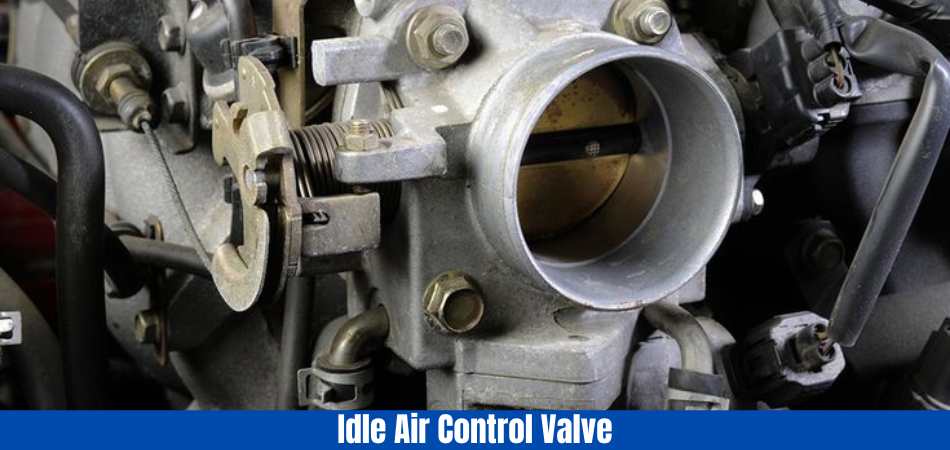
4. Take note of the signs.
In addition to erratic idle speed, an unplugged or faulty IAC valve can cause the engine to stall. Observing and taking immediate action when you notice these symptoms can prevent further damage.
5. Inspection by a professional
If you are uncomfortable inspecting the IAC valve, having it checked by a professional can help catch potential problems early on.
The best thing you can do for your vehicle is to prevent problems from occurring in the first place. Maintaining your vehicle’s performance and longevity can be ensured by taking these preventive measures.
Cleaning and Replacing Idle Air Control Valve
1. When to Clean
A malfunction in the Idle Air Control (IAC) valve could cause your car’s idle to be rough or its RPM to fluctuate. IAC valves can become clogged with gunk over time, preventing them from functioning correctly. It is often possible to restore the functionality of the IAC valve by simply cleaning it.
For specific instructions on accessing and cleaning your IAC valve, consult your car’s owner’s manual. Before starting your vehicle, turn off the engine and let it cool. If there is any buildup on the valve, carefully remove it and use an appropriate cleaner, such as throttle body cleaner or mass air flow sensor cleaner. You can check if the issue has been resolved by reinstalling the valve and starting your car after cleaning it.
2. The right time to replace
Occasionally, cleaning the IAC valve may not be enough, especially if it is faulty or damaged. If this is the case, you should replace the IAC valve instead. Persistent stalling, difficulty starting the engine, and decreased fuel efficiency are all signs that the valve needs to be replaced.
When buying a new valve, ensure it is compatible with your car’s make and model. Replace the IAC valve according to your car’s owner’s manual instructions, or consult a professional mechanic if you’re unsure or uncomfortable. Start your vehicle to verify that the issues have been resolved and running smoothly again after installing the new IAC valve.
How To Clean Idle Air Control Valve?
The IAC valve may be dirty and needs to be cleaned and maintained to perform correctly.
IAC valves can accumulate carbon and debris during combustion if not cleaned regularly. The idle air control valve can become faulty when contamination builds up.
Removing any debris or contamination that has built up on the IAC valve can be helpful to get it working again. When you intend to clean your car’s idle air control valve, you should refer to the owner’s manual.
If the valve needs to be cleaned correctly, the owner’s manual should provide accurate instructions.
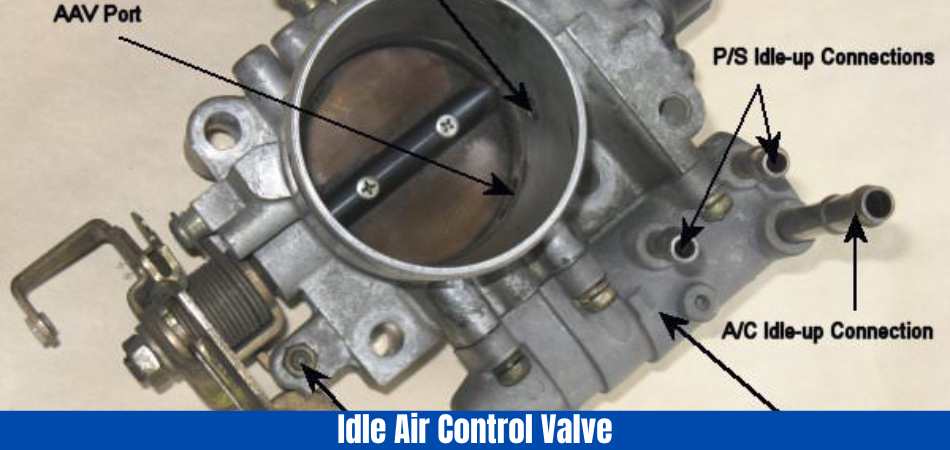
Here’s a step-by-step guide that should work with most vehicles when cleaning the IAC valve if you can’t find the relevant information.
Not all carbon cleaners are suitable for all vehicles and components, and you should only use them when you are sure they will not harm your vehicle.
Step 1-
Find the idle air control valve. Usually, the IAC is located near the engine’s air intake.
Step 2-
The next step is to remove the electric plug from the back of the IAC valve. The plug should be easy to use with a screwdriver.
Step 3-
To remove the valve, you must remove the screws and bolts.
Step 4-
You can access the downward-pointing valve once the bolts are removed.
Step 5-
Apply carburetor cleaner to the valve’s pointed end. You should avoid getting any of the cleaners into the valve’s housing.
Step 6-
You should continue spraying the valve until all the carbon and debris are removed.
Step 7-
Reassemble everything carefully, remembering to reconnect the wiring.
Step 8-
Once everything has been reinstalled correctly, you can start the car and listen to how it idles. The sound should now be improved if dirt was the problem.
The purpose of this guide is to explain how to clean the IAC valve by removing it. Several guides online explain how to clean the idle air control valve without removing it.
How To Bypass the Idle Air Control Valve?
The following instructions will guide you through bypassing the idle air control valve:
Connect the negative terminal to the battery and disconnect it.
When you open the hood, you can find the air cleaner housing on top of the engine. An idle air control valve is under the throttle body, just in front of the housing.
Removing three 10mm nuts from the housing cover is necessary to lift it off. Remove the throttle body from its mounting tabs and disconnect any electrical connectors underneath (two 10mm bolts) before removing it from the throttle body.
Three hoses are attached to the idle air control valve, including a small hose that goes into a large hose and a larger hose with a vacuum line.
Disconnect the three hoses connected to the valve and any vacuum lines (one or two) connected by loosening but not removing two 13mm nut screws on each end (one at each end).
Put the small hose into the large port of your new IACV and connect the three hoses to them. Ensure these clamps are tightened with a wrench or pliers, but do not overtighten! Next, attach any vacuum lines you need to attach here if you didn’t already; tighten those clamps firmly, but don’t overtighten them!
Attach your new IACV’s mounting bracket to the throttle body’s mounting tabs (two 10mm bolts). Be sure to position all three hoses properly around this bracket before tightening these two bolts down securely. If necessary, move things around a bit so they fit correctly. You can use your 10mm socket & ratchet/wrench or whatever combination tool you like to tighten these two bolts down securely (I use my Craftsman 1/4″ drive ratcheting wrench).
Conclusion: What Happens If You Unplug The Idle Air Control Valve
Now, you have got some clear ide that, What Happens If You Unplug The Idle Air Control Valve. Ultimately, the Idle Air Control (IAC) Valve keeps the engine’s idle speed constant. Leaving it unplugged can cause erratic idle speed, frequent stalling, difficulty starting the engine, reduced fuel efficiency, and potential long-term damage to the engine.
Your vehicle’s overall health and performance can be improved if you know the symptoms and how to address an unplugged or faulty IAC valve.
Read more of our articles here.
Learn more about this topic here.
FAQs
How does the idle air control valve (IACV) work?
An idle air control valve (IACV) controls how much air enters a vehicle’s engine when the throttle is closed, ensuring a stable idle speed.
What happens when I unplug the idle air control valve while the engine is running?
While the engine is running, unplugging the idle air control valve can disrupt the engine’s idle control system. There is a possibility that the engine will stall or idle at an erratic speed.
Can the engine be damaged by unplugging the idle air control valve?
Temporarily unplugging the idle air control valve shouldn’t damage the engine, but it can cause stalling rough idling, or poor performance.
What is the purpose of unplugging the idle air control valve?
The idle air control valve may be unplugged for diagnostic purposes. It should, however, be done with caution, and the consequences should be understood.
Can I drive with the idle air control valve unplugged?
Driving with the idle air control valve unplugged can result in poor engine performance, stalling, and other issues that could compromise safety.
What is the best way to test the operation of my idle air control valve?
You can find specific instructions on testing the idle air control valve in your vehicle’s service manual. Checking engine idle speed or using a multimeter are two standard methods.







Leave a Reply